Days till:
It is: 16 days till Mother's Day
It is: 49 days till Jurassic World's theatrical release
It is: 56 days till Inside Out's theatrical release
In the Spotlight:
Unless A) you've been living under a rock, B) extremely uninterested in dinosaurs or C) have been eaten by raptors, you'll know that Jurassic World, the third sequel to Jurassic Park, is coming out on June 12! The awesome new trailer just released last Monday, and let me tell you, it's better than all the other trailers and TV spots we've seen so far combined with loads of new footage. Don't waste anymore time. Check it out now:
One word: AWESOME!!! I was so awestruck by how cool this trailer is. It's got just about everything you could want concerning the new film. But as if that wasn't enough, another clip from the film aired yesterday! The clip below features Indominus rex as she breaks out of her enclosure. It mostly features clips we've seen from the trailer, but at least we can now see them the way they'll be in the film:
This clip is also one of the few in which we here Simon Masrani's unqiue Indian voice.
As if these clips still weren't enough, last Friday, Saturday and Sunday brought us official all-new Jurassic World posters! Check 'em out below:
 |
| Claire and Indominus rex have a staredown! |
 |
| There's always a bigger fish...er, Mosasaurus, in the sea! |
 |
| Owen and the Raptor Squad race through the jungle! |
Topic of the Week by Christian Ryan
Several of the many animals we share the planet with are rapidly becoming endangered. As their numbers decrease, it becomes more and more evident that they need our protection. Sometimes, no matter what we do, animal species go extinct, forever lost from the earth. Often times, most people only hear about examples of animals that are still endangered or have become extinct. However, there are also instances where the opposite is the case and we successfully save an animal from extinction – today, many of these successes result in the animal becoming overly bountiful today!
 |
| Animals all over our planet are in dire need for conservation! |
Below is a list of just a few of these endangered animal success stories, how they became endangered, and what people did to help them out.
American Alligator
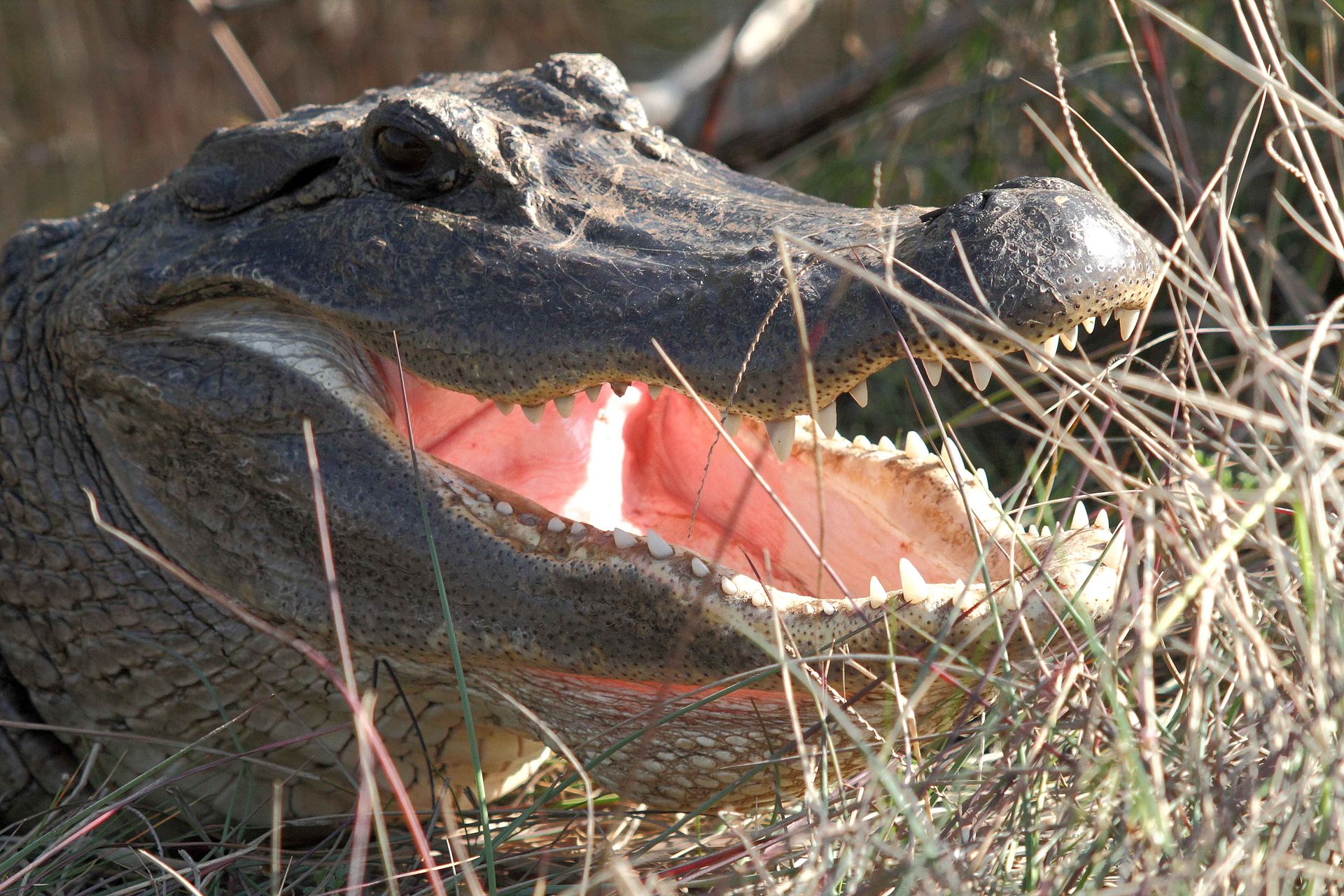 |
| The American alligator was once commonly hunted for their beautiful hides. |
Alligators began going extinct thanks to people clearing out their habitat to make room for human developments and because they were hunted for their hides. People had been using their tough skin to make leather since the 19th century. Conservationists realized that alligators needed help, so it was put into protection under the law in 1962. The government made it illegal across the United States to hunt and kill alligators. Conservationists quickly got to work; thanks to much captive breeding and releasing members of the species into the wild, the American alligator made a thriving comeback. Today, there are more than 5 million of these cold-blooded predators swimming through the southeastern waterways, and are even starting to expand their range northward into North Carolina.
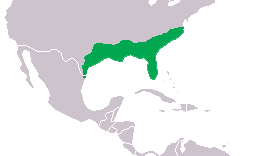 |
| The range of the American alligator is now spreading, thanks to conservation methods. |
Bald Eagle
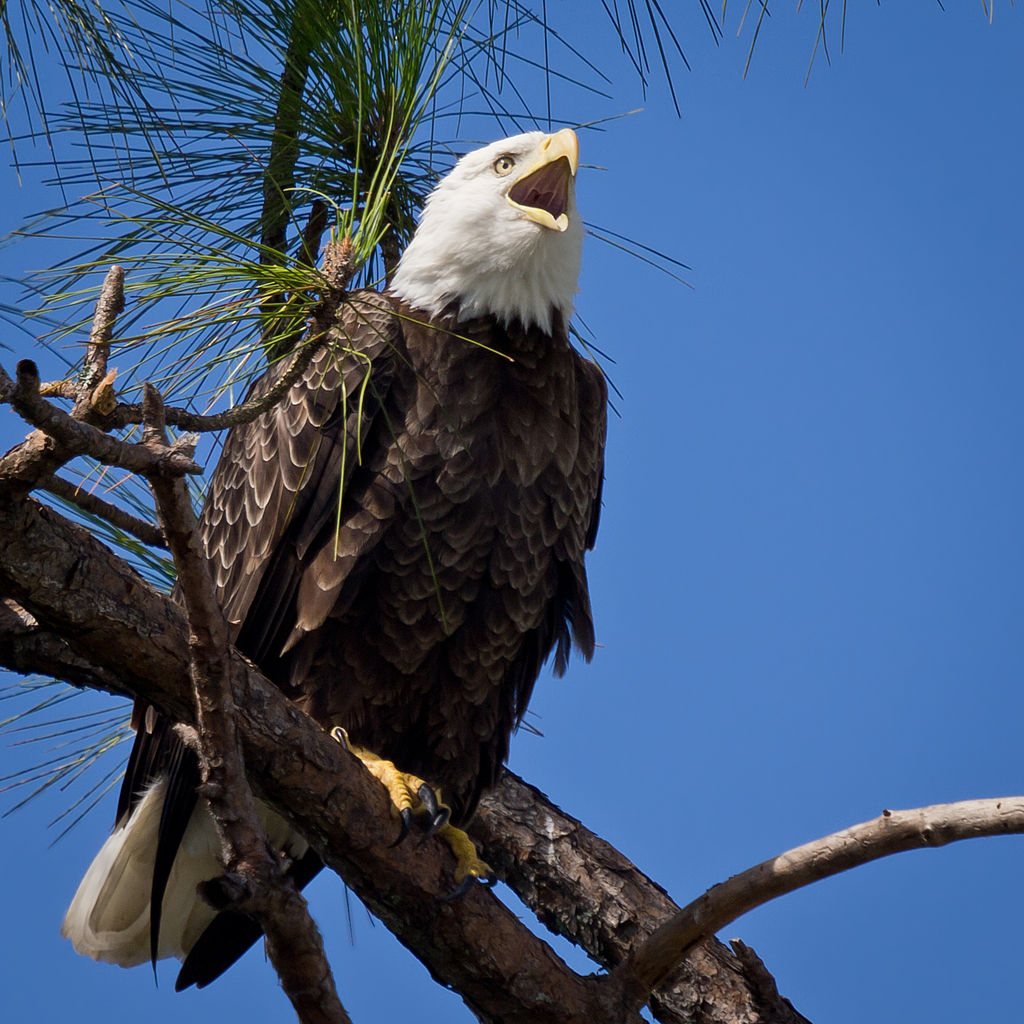 |
| Bald eagle's were threatened with extinction from the pesticide DDT |
In addition to the killing of bald eagle's to keep them from eating fish stocks, for sport and habitat loss, the bald eagle, along with other birds, also greatly suffered from a chemical pesticide called DDT. The DDT pesticide was put into use after the end of World War II to protect crops from insects that ruined them. However, DDT would often get washed into the waterways where it was absorbed by fish and aquatic plants. Birds like bald eagles that ate the fish also became poisoned with the chemical. DDT wasn't deadly to the birds themselves however (most of the time); instead, DDT caused the mother birds to lay eggs with thin egg shells that would either break when the mother sat on them for incubation or fail to hatch. With fewer eagles being born, their numbers plummeted to dangerously low levels.
Conservationists began to get concerned by 1963. At that time, only 487 or so nesting pairs of bald eagles had managed to survive. In order to help save the species from extinction, the bald eagle was considered endangered in most states. They also heavily restricted the use of DDT in 1972. As with the alligator, breeding eagles in captivity, releasing them into the wild and preserving their habitat and nesting areas, the eagle was saved from extinction by 2007. The bald eagle can now remain the national bird of the United States of America for years to come.
 |
| Bald eagles have a bright future ahead of them! |
American Bison
 |
| American bison are relics from the Ice Age. |
But this all changed in the 19th century upon the arrival of early pioneering settlers from Europe. Unlike the native Americans, who were very conservative about the number of bison they hunted, early settlers killed bison in vast numbers for food, sport and even just to lower the Native American population. As many as 50 million bison were wiped out by Europeans, lowering their numbers into the low hundreds. Europeans also, as usual, cleared out bison habitat to make room for their own settlements.
 |
| Bison once roamed in herds numbering into their millions across the American plains. |
Bontebok
 |
| At one time, only 22 bonteboks were left in existence. |
Bonteboks were commonly hunted throughout the early 1800's. In fact, they were so commonly hunted that only 22 members of the species survived. This is why the last-surviving bonteboks were kept in a large fenced area in order to prevent them from being shot at. It is thanks to efforts such as these that the bontebok has increased greatly in number – there are now over 3,000 individuals in several conservation areas in Africa. Talk about a comeback!
Gray Wolf
 |
| Wolves were hunted extensively because they were considered a threat to livestock. |
As with many apex predators, Europeans saw the need to get rid of wolves for several reasons. Wolves were known to kill livestock and were thought to be vile, vicious, devious and evil animals, so people shot and poisoned countless numbers of them. They also killed them to use their pelts as clothing. Another threat to the wolf was (and often times still is) habitat loss. Most wolves were killed merely because of the misconception that they were evil and dangerous creatures. Whereas in reality, wolves actually tend to avoid people if possible. Due to all the killing and habitat loss, the gray wolf's numbers were reduced so much that there were only a few hundred still left in the wild.
After becoming listed under the Endangered Species Act in 1974, wolves made an incredible return! Now, thousands of wolves can be found in the wild...but at one point, the success seemed almost too good. Wolves still needed the law's protection, but the government considered removing the gray wolf from the Endangered Species List in 2013 due to their apparent comeback. Thankfully, this was prevented and in the February of 2014, it was decided the consideration of removing the gray wolf from the Endangered Species List was too soon and based on insufficient data. Therefore, the gray wolf still receives protection to this day.
Humpback Whales
 |
| The humpback whale is known for leaping into the air; this is called breaching and its purpose is not fully understood. |
Even the largest animals are subject to becoming extinct. For thousands of years, whales have been hunted for their meat, old and blubber. This practice is referred to as “whaling”. Even today, thousands of whales are killed each year. Whaling has been responsible for the decline in whale populations worldwide, including those of the humpbacks. By the middle 1960's, the humpback populations had decreased to only 1,200 in the North Pacific! Fortunately, the Endangered Species Act came to the rescue once again.
Because laws are now prohibiting whaling in many areas around the world, humpback numbers are slowly on the increase. There are 22,000 or so humpbacks alive today that descended from the aforementioned population of only 1,200. But illegal whaling practices are still occurring around the world. If we are to ensure the humpback whale's survival, the whaling industry must be nipped at the bud.
Southern Sea Otter
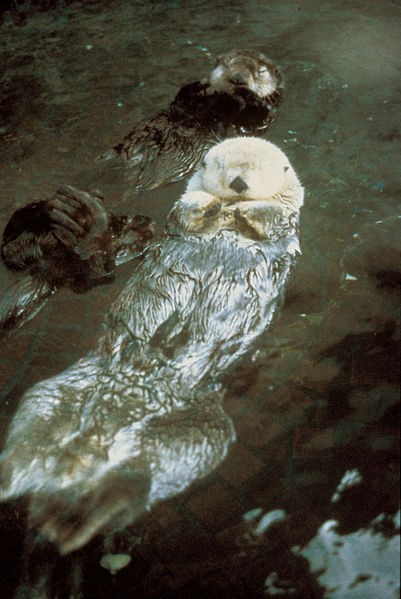 |
| Who would want to kill such an adorable creature? Unfortunately, many people did. |
Before the 1700's, there were an estimated between several hundred thousand to over a million. Afterward, there were only about 1,000 to 2,000 of these creatures left. These semi-aquatic mammals are very important to the kelp forests they live in. Sea otters love to eat sea urchins (among other invertebrates). Sea urchins in turn, dine on seaweed. The otters eat the urchins, therefore enabling seaweed to grow, and the seaweed provides a home for otters and loads of other aquatic species. Without the otters, seaweed would be much rarer and harder for animals that depend on it to find.
Fortunately, sea otters gained protection under the International Fur Seal Treaty of 1911, and the Marine Mammal Protection and Endangered Species Act in the 1970's. While their numbers are still far below their initial population, the fact that there are around 100,000 to 150,000 sea otters alive today just goes to show you how greatly their numbers have increased thanks to conservation methods.
White-tailed Deer
 |
| The white-tailed deer's population dropped to almost 300,000 in the United States. |
In the early 20th century, white-tailed deer were, as is often the case with many once-and-now-endangered animals, suffering from unregulated hunting. In the year 1930, the number of white-tailed deer dropped to almost 300,000 in the United States. Hunters and conservationists began to get worried by the loss of deer, so went to action. They were able to get laws passed that made it illegal to commercially exploit these deer and hunting was extremely regulated.
The white-tailed deer is a prime example of how a species bounced back from its endangered status – as of 2005, there were as many as 30 million of these deer in the United States alone and their numbers are still growing! However, there are now so many deer that there are too many for some ecosystems due to humans having killed off their the majority of their predators.
This is why the work of a conservationist is never done. These people who have dedicated their lives to protecting animals and their habitats must always stay on their toes to find out why animals are becoming endangered and how to save them. In the future, I hope to see many more stories of how conservationists and conservative game hunters worked together to pull animals back from the brink of extinction.
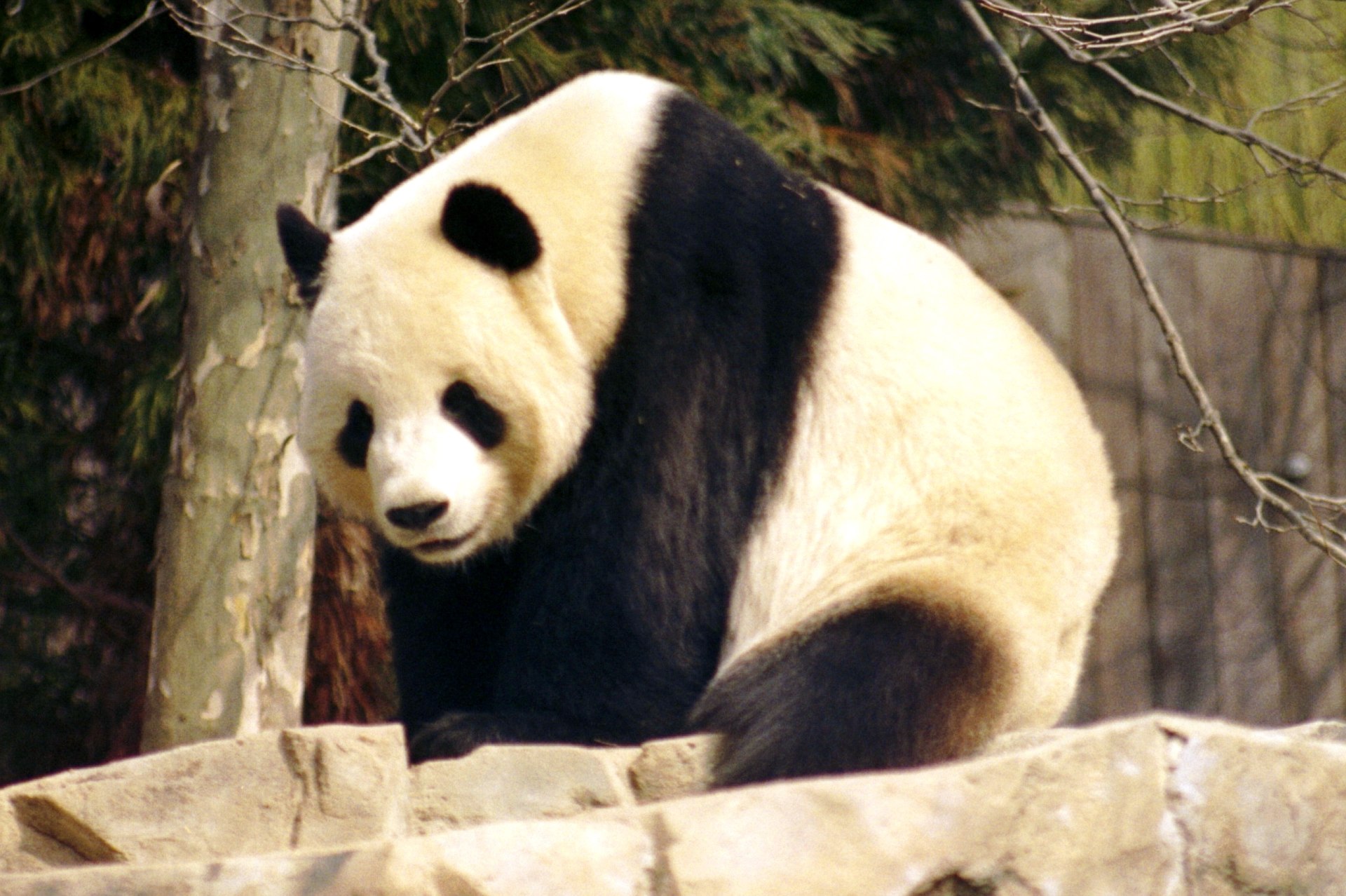 |
| Several animals, like the giant panda, still need our help! |
References:
www.animals.nationalgeographic.com/animals/reptiles/american-alligator
www.huffingtonpost.com/2014/02/08/endangered-species-act-successful_n_4740535
www.animals.nationalgeographic.com/animals/birds/bald-eagle
www.wcs.org/saving-wildlife/hoofed-mammals/bison/the-american-bison-society
www.wcs.org/news-and-features-main/bright-future-for-bison
www.gondwanagr.co.za/endangered-bontebok
www.biologicaldiversity.org/campaigns/gray_wolves
www.defenders.org/gray-wolf/threats
www.ecowatch.com/2013/12/07/success-stories-endangered-species-act
www.animals.nationalgeographic.com/animals/mammals/humpback-whale
us.whales.org/wdc-in-action/whaling
www.animals.nationalgeographic.com/animals/mammals/sea-otter
www.defenders.org/sea-otter/threats
www.wikipedia.org/wiki/white-tailed-deer
www.suwanneeriverranch.com/WTinfoM
www.animals.nationalgeographic.com/animals/mammals/white-tailed-deer
Disclaimer: Many (or in some cases all) of the photographs and images above are not mine. If you own one or more of them and would like them to be removed, politely let me know via my email address.
No comments:
Post a Comment